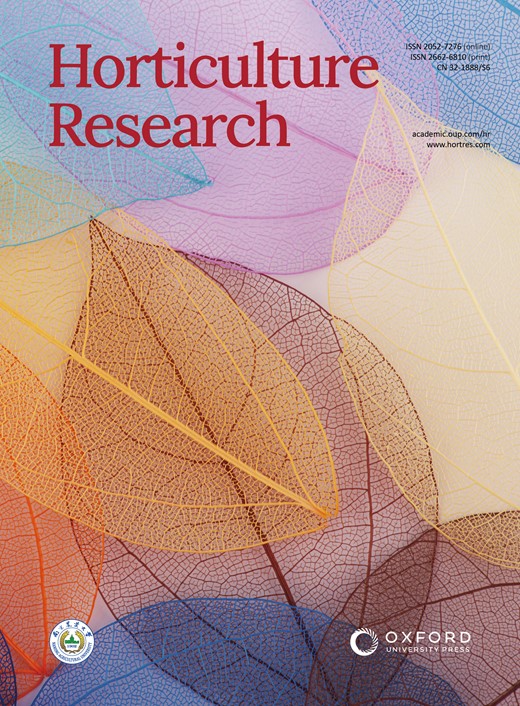Amino Acid Transporter CsBAT Links GABA Accumulation to Flavonoid Metabolism in Camellia sinensis
IF 8.5
1区 农林科学
Q1 Agricultural and Biological Sciences
引用次数: 0
Abstract
γ-Aminobutyric acid (GABA), a signature bioactive compound in tea, plays a crucial role in determining both flavor profile and health-promoting properties. Despite its importance, the molecular regulation of GABA accumulation in tea plants - especially its metabolic crosstalk with key quality determinants like flavonoids - remains elusive. While amino acid transporters are known to mediate source-sink allocation in plants, the functional characterization of GABA transporters in Camellia sinensis has been lacking. In this study, we identified and functionally characterized the bidirectional amino acid transporter CsBAT in tea plants. Through a comprehensive multi-platform validation system encompassing yeast heterologous expression, Arabidopsis genetic transformation, and tea transgenic system, we revealed that CsBAT shows vascular-specific expression patterns and facilitates directional amino acid transport from source (mature leaves) to sink (young shoots), thereby significantly boosting GABA accumulation in buds and young leaves. Importantly, we discovered that CsBAT functionally interacts with key flavonoid biosynthetic enzymes (LAR, 4CL, C4H) within secondary metabolic networks. Our findings provide the first mechanistic link between CsBAT-mediated amino acid transport and tea quality formation, establishing both theoretical frameworks and practical tools for molecular breeding of premium tea cultivars.氨基酸转运蛋白CsBAT与山茶中GABA积累与类黄酮代谢有关
γ-氨基丁酸(γ-氨基丁酸,GABA)是茶叶中一种重要的生物活性物质,在决定茶叶风味和促进健康方面起着至关重要的作用。尽管它很重要,但茶树中GABA积累的分子调控——尤其是它与黄酮等关键品质决定因素的代谢串串——仍然难以捉摸。虽然已知氨基酸转运体介导植物源库分配,但山茶中GABA转运体的功能表征一直缺乏。在本研究中,我们鉴定了茶树中双向氨基酸转运体CsBAT并对其进行了功能表征。通过酵母异源表达、拟南芥遗传转化和茶叶转基因系统的综合多平台验证系统,我们发现CsBAT具有血管特异性表达模式,并促进氨基酸从源(成熟叶)到汇(幼芽)的定向运输,从而显著促进GABA在芽和幼叶中的积累。重要的是,我们发现CsBAT在二级代谢网络中与关键的类黄酮生物合成酶(LAR, 4CL, C4H)功能相互作用。我们的发现首次揭示了csbat介导的氨基酸转运与茶叶品质形成之间的机制联系,为优质茶叶品种的分子育种建立了理论框架和实践工具。
本文章由计算机程序翻译,如有差异,请以英文原文为准。
求助全文
约1分钟内获得全文
求助全文
来源期刊

Horticulture Research
Biochemistry, Genetics and Molecular Biology-Biochemistry
CiteScore
11.20
自引率
6.90%
发文量
367
审稿时长
20 weeks
期刊介绍:
Horticulture Research, an open access journal affiliated with Nanjing Agricultural University, has achieved the prestigious ranking of number one in the Horticulture category of the Journal Citation Reports ™ from Clarivate, 2022. As a leading publication in the field, the journal is dedicated to disseminating original research articles, comprehensive reviews, insightful perspectives, thought-provoking comments, and valuable correspondence articles and letters to the editor. Its scope encompasses all vital aspects of horticultural plants and disciplines, such as biotechnology, breeding, cellular and molecular biology, evolution, genetics, inter-species interactions, physiology, and the origination and domestication of crops.
 求助内容:
求助内容: 应助结果提醒方式:
应助结果提醒方式:


